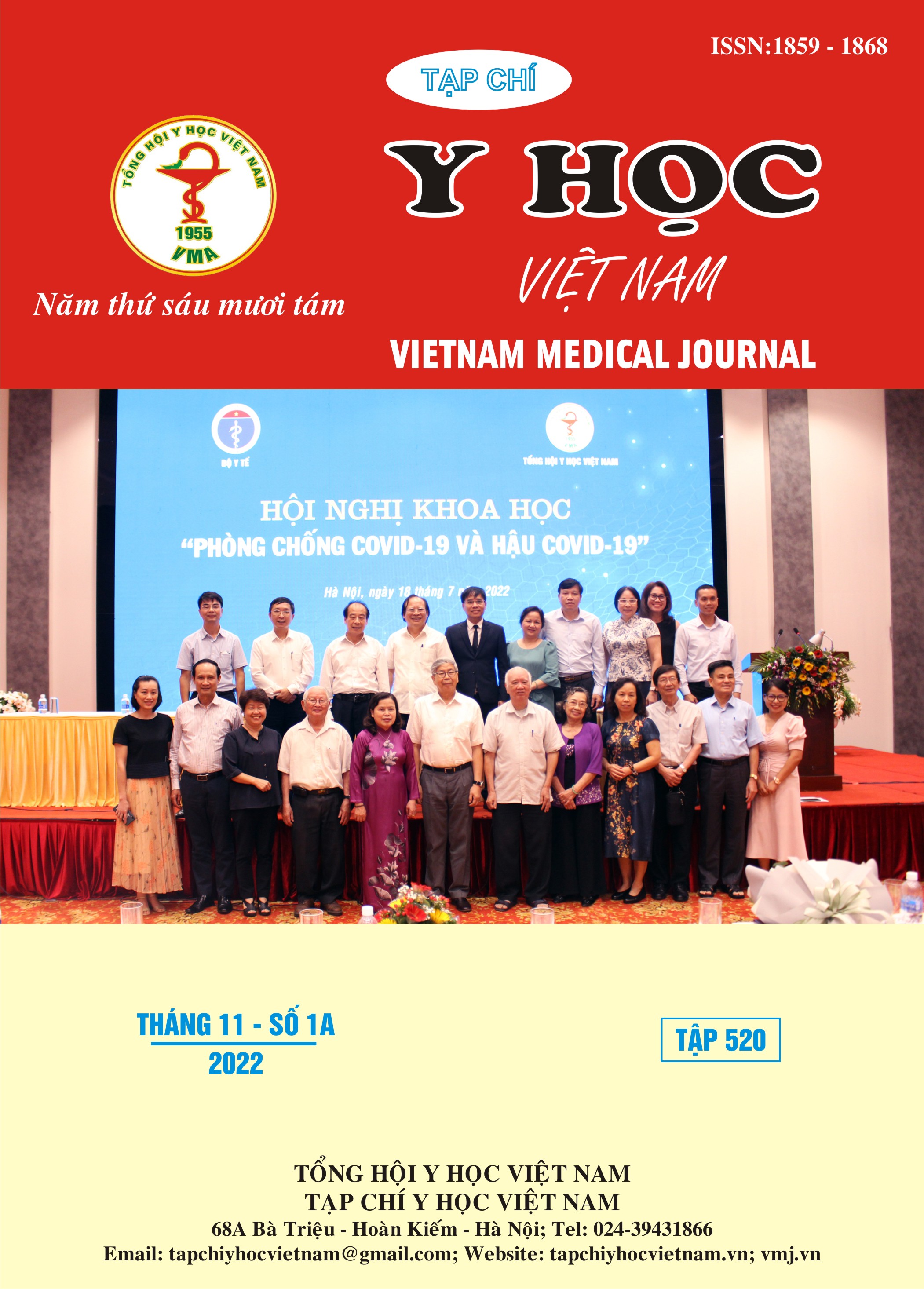ACCEPT – A NEW MODEL IN ACUTE EXACERBATION OF CHRONIC OBSTRUCTIVE PULMONARY DISEASE PREDICTION
Main Article Content
Abstract
Objective: Acute Exacerbations of Chronic Obstructive Pulmonary Disease (AECOPD) could leave many harmful effects on respiratory function, quality of life, and consume large amounts of money for medical treatment. In 2020, Amin and colleagues developed a new model which is used to predict the recurrence of AECOPD. It’s named Acute COPD Exacerbation Prediction Tool – abbreviation is ACCEPT. Our study was conducted to determine the prognostic value of ACCEPT on outpatients with chronic obstructive pulmonary disease at Bach Mai hospital. Methods: A cross-sectional descriptive study in 221 outpatient patients who has chronic obstructive pulmonary disease (COPD) monitoring and treatment at Bach Mai Hospital. The predictive value of ACCEPT for the number of exacerbations recorded in the group of patients was calculated, described by the ROC curve and the area under the ROC curve (AUC). Result: This study sample has a male-to-female ratio of 94.4% - 5.6%, 87.1% of them used to smoke, 58.6% of them are farmers and workers, 53.7% of them has mRC from 0-1 exacerbation 12 months ago, 45.3% of them had a CAT score between 11-29. Applying the ACCEPT model, we recorded the predictive value for patients who have 2 or more exacerbations during follow-up period with sensitivity and specificity of 80.0% and 86.6% respectively at the cut-off level equal to 1.47 (AUC = 0.902 (95% CI 0.844-0.960). Conclusion: ACCEPT model has a very good predictive value for exacerbations in the next 12 months for the group of outpatient patients with chronic obstructive pulmonary disease monitoring at Bach Mai Hospital. More studies are needed to verify this exacerbation prediction model in other groups of patients, with a larger sample size could show out more predictive value of ACCEPT.
Article Details
Keywords
Chronic obstructive pulmonary disease,, COPD, acute exacerbation of chronic obstructive pulmonary disease, AECOPD, predictive tool, ACCEPT
References
2. Nguyễn Viết Nhung và CS ĐNS. Nghiên cứu tình hình dịch tễ bệnh phổi phế quản tắc nghẽn mạn tính ở việt nam - Tạp Chí Y học Thực Hành - Bộ Y Tế. Published February 2010. Accessed June 16, 2021. http://www.yhth.vn/nghien-cuu-tinh-hinh-dich-te-benh-phoi-phe-quan-tac-nghen-man-tinh-o-viet-nam_t1331.aspx
3. Donaldson GC, Seemungal T a. R, Bhowmik A, Wedzicha JA. Relationship between exacerbation frequency and lung function decline in chronic obstructive pulmonary disease. Thorax. 2002;57(10):847-852. doi:10.1136/thorax.57.10.847
4. Guerra B, Gaveikaite V, Bianchi C, Puhan MA. Prediction models for exacerbations in patients with COPD. Eur Respir Rev. 2017;26(143). doi:10.1183/16000617.0061-2016
5. Adibi A, Sin DD, Safari A, et al. The Acute COPD Exacerbation Prediction Tool (ACCEPT): a modelling study. Lancet Respir Med. 2020;8(10):1013-1021. doi:10.1016/S2213-2600(19)30397-2
6. Chatila WM, Thomashow BM, Minai OA, Criner GJ, Make BJ. Comorbidities in Chronic Obstructive Pulmonary Disease. Proc Am Thorac Soc. 2008;5(4):549-555. doi:10.1513/ pats.200709-148ET
7. Lee SD, Huang MS, Kang J, et al. The COPD assessment test (CAT) assists prediction of COPD exacerbations in high-risk patients. Respir Med. 2014;108(4):600-608.doi:10.1016/ j.rmed.2013.12.014


